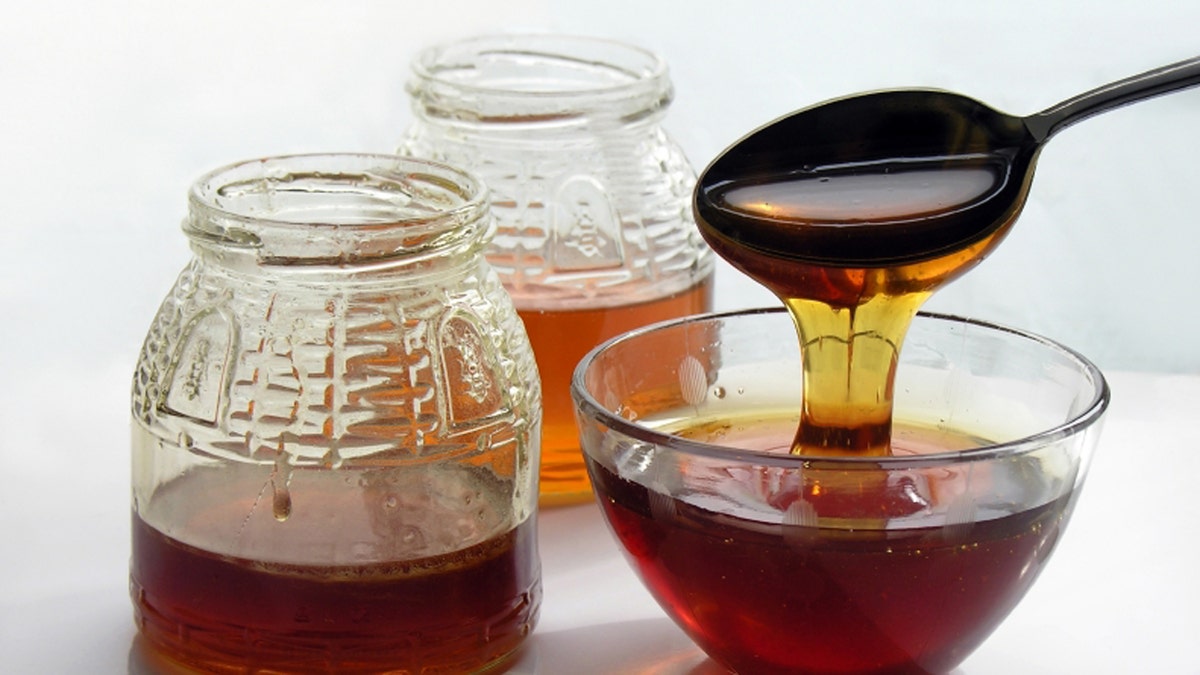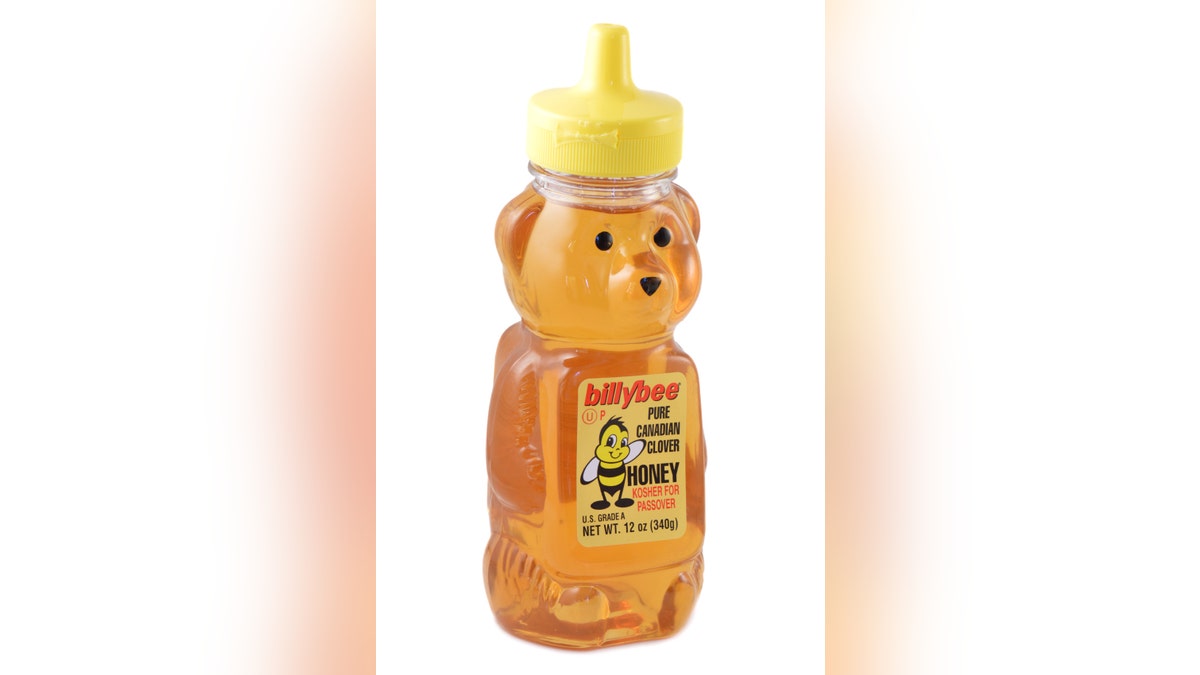The addiction started eight years ago. I was visiting the Union Square Greenmarket for the first time, and there was a local beekeeper there. He had samples.
Free samples.
Lots of them.
Up until then I'd only tasted the overly sweet, one-note honeys that line most grocery store shelves. But these honeys were different. They were nuanced and complex. They smelled like flowers.
I bought a jar and brought it home. And ever since, I've been on a rampage, picking up a jar or two of local honey whenever I travel and precariously pining over the shelves at speciality food stores.
Now, my pantry is crammed. The shelves are sticky. They sag under the jars' weight.
I'm not alone in this addiction. "There's something about honey that can just hook you in," says Rebekah Peppler, Brooklyn-based food stylist and author of Honey. She's gone down the honey rabbit hole, too.
This is how to fall down that hole yourself.
1. Learn how honey is made.

(iStock)
A fascination with honey often starts with a fascination of how honey is made, a natural process that is as complex and perfect as anything happening at, say, Apple. To put it briefly: Honey is made from the nectar of flowers. Bees suck the nectar from flower blooms and store it in their stomachs. While there, the nectar mixes with protein and enzymes, which breaks the nectar down from sucrose into glucose and fructose.
Once at the hive, the bees deposit the converted nectar into the cells of the hive and fan it with their wings until enough moisture evaporates that it has become the thick syrup we know as honey. The bees cap the cells with wax for storage (because honey isn't just food for us—bees feed on it as well), which indicates to a beekeeper that the honey can be collected.
2. Find your favorite varietal.

(iStock)
Like wine, honey can be blends of several nectars, or they can be made solely with one type of nectar. A proper honey addict is familiar with the most common single-varieties, has respect for all of them, but has a few he or she loves more than the others. A few of the more than 300 varieties in the United States:
--Acacia: From the yellow clusters of flowers of acacia trees, this is the sweetest, most delicate honey available. It's clear and almost agave-like
--Clover: Floral and mild. The most readily-available variety and good for all-purpose use.
--Tupelo: From the flowers of Tupelo trees that grow in the swamps of north Florida, this is an extremely rare honey that has a clear, gold-toned color and a rich, buttery flavor.
--Orange Blossom: Another great all-purpose honey, made from the white flowers of orange trees. Perfectly sweet, with fresh citrus undertones.
--Buckwheat: One of the most robust varieties, from the flowers of the buckwheat plant. It's color is deep, dark brown and its flavor is reminiscent of molasses.
--Chestnut: Another honey that isn't messing around. Strong and slightly bitter. This personal addict's favorite.
3. Respect the blend.
![f0f29013-[]](https://a57.foxnews.com/static.foxnews.com/foxnews.com/content/uploads/2018/09/1200/675/sdfsf435354sdsad.jpg?ve=1&tl=1)
Closeup of Homemade honey (iStock)
"When we place honey bees in an area where certain flowers are in bloom, we get that variety of honey," says Claire Tauzer, General Manager of Sola Bee Farms. Beekeepers will shuttle bees to certain locations to yield single-variety honeys—a clover field, say, to make clover honey.
But honey made from various types of flowers is also possible. "Honey bees will stick to a single source of nectar and pollen if it is clean and high quality. That said, in many areas and seasons there are many different types of plants blooming that are all healthy and nutritious for honey bees. This is why you get seasonal honey and varietals with more than one flower source, like wildflower honey."
It's perfectly acceptable to become addicted to a high-quality blend.
4. Try out thick and thin.

(iStock)
Honey addicts will quickly realize that every honey has its own consistency—some are translucent and flow freely, others creamy and spreadable, and a few thick and practically solid. This is due to the chemical makeup of the nectar that made the honey: the more glucose in the honey, the more likely it will be dense and opaque; the more fructose, the clearer and thinner the honey will be.
Honey addicts should embrace all honeys, regardless of its consistency, including crystallized honey. Tauzer notes: "Quality honey can be crystalized in the jar, which is actually a good thing. It shows that the honey you are buying has not been watered down or overheated and filtered."
Crystallized honey can be restored to its smooth, liquid consistency by placing the jar in warm water. But a true addict will spread it on toast as-is.
5. Let go of the honey bear.

(iStock)
At this point in your addiction you'll begin to suspect that the honey you've been pouring from those cute plastic bears all your life is amateur stuff. Not enough flavor. Eerily consistent.
It stings, but you're on the right path.
Honey bears "are not bad in and of themselves," says Tauzer. "But historically they have been used by very large importers of honey from China and other countries. It's hard to track the origin or actual flower source of these honeys, and if you don't know where it comes from, I wouldn't trust it."
Zeke Freeman, founder of Bee Raw concurs. "It's honey, but it's honey that has been ultra-filtered to remove all traces of pollen and has likely been diluted with less expensive sugars to make it cheaper. Not having any pollen hides the original source of honey and makes it very difficult to tell if other less expensive sugars have been used to dilute the honey."
Time to let go of those honey bears, addict. Use up whatever bears you have lingering in your pantry, then kiss them goodbye.
Check out more need-to-know honey facts.
More from Epicurious
The Epic Hack to Peeling a Dozen Eggs in 104 Seconds
The Crazy Secret Ingredient That Makes Steak More Tender
11 Ingredients You Shouldn't Refrigerate
20 Must-Try Ways to Pair Items You Already Have In Your Pantry




















